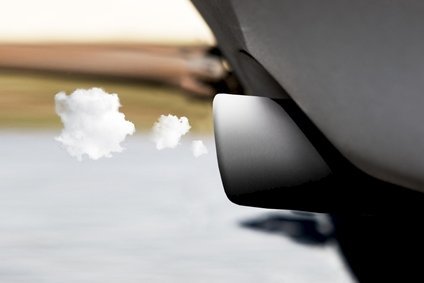
The car’s exhaust system is a technology hotbed, playing a decisive role in controlling emissions and acoustic comfort. Continuing just-auto’s series of research snapshots – pulled from its automotive research platform, QUBE with comment from market leaders Tenneco and Faurecia – Matthew Beecham reviews some technical trends in the exhaust sector.
Blowing hot and cold

Discover B2B Marketing That Performs
Combine business intelligence and editorial excellence to reach engaged professionals across 36 leading media platforms.
The complete exhaust system is typically divided into the ‘hot end’ and ‘cold end’. The hot end – the end closest to the engine – includes the exhaust manifold, flex coupling, warm-up converter, air-gap down pipe and underfloor converter. The cold end includes the hangers and brackets, resonator, intermediate pipes, muffler, heat shields and exhaust tip.
Emissions regulations continue to trigger innovations
Technical developments in the hot end of the exhaust are highly influenced by new emission legislations. As each new emission regulation swings into force, more and more content is added to the exhaust in order to comply. This adds value to the overall price of the system.
Although engine downsizing does not affect the exhaust system sizing since it is related to engine power, not engine size, Stéphane Martinot, Director of Marketing of Faurecia Emissions Control Technologies told just-auto that a key consequence of downsizing is that boosting is gaining momentum combined with direct injection (GDI). He said: “Particulates on gasoline engines have already been considered in the emissions regulations with a mass limit for both Europe and North America. … Another important technology related to the downsizing trend is the use of twin-scroll turbo-chargers. This configuration corrects the “turbo-lag” issue by separating the exhaust system with two parallel helical (twin scroll) channels. In this respect, fabricated exhaust manifold technologies offer a compelling alternative to cast: they are about 20 percent lighter and have an inherent lower thermal inertia that enables about 30 to 40 percent improvement in emissions. In a twin-scroll configuration, the manifold can be directly integrated with the turbine which yields an optimal combination of low speed response and high-end power.”
Thermoelectric generators
In a typical internal combustion engine, approximately 30 percent of the fuel energy is used for actual vehicle propulsion, while more than 70 percent is lost, about half of it through the vehicle’s exhaust system. Thermoelectric generators (TEGs) help capture a portion of the lost energy, convert it to electricity and redistribute it to electrical systems in the vehicle, which can ultimately support improved fuel efficiency.
In terms of the market acceptance for TEGs in Europe, Marcel Womann, Supervisor, Advanced Cold End Products, Advanced Engineering, Tenneco Clean Air Division reckons that there are many different technologies available. These range from improved aerodynamics and weight reduction via waste heat recovery and brake energy recovery to improved gear systems and hybridisation currently in development that can help to make vehicles more efficient. “Waste heat recovery technologies like thermoelectric generators and Rankine systems are promising technologies that could be ready for mobile applications after 2018 in the case of Rankine systems and after 2020 in the case of thermoelectric generators. As is common when new technologies are introduced, the operational performance criteria need to be addressed. For thermoelectric generators, the challenges for a broad application include improved efficiency in a wide temperature range, stabilisation of material properties to meet vehicle life time expectations and development of series manufacturing processes for thermo-electric material and modules that allows production at competitive costs.”
On another note
We are also seeing how carmakers are paying close attention to exhaust sound in order to maintain and enhance their brand. For its part, Faurecia offers customers its so-called Exhaust Dynamic Sound Technologies to cancel unwanted noise or generate sound that creates a distinguishable powertrain signature. Martinot added: “Acoustic performance is crucial to the commercial success of any vehicle. Car buyers have expectations of how their vehicles should sound as they travel down the road or accelerate up a hill. A premium car should have a sound that reflects its power, while a smaller car may sound less muscular but still may aspire to sound sporty.”
On balance, vehicle emission control products and systems play a critical role in safely conveying noxious exhaust gases away from the passenger compartment and reducing the level of pollutants and engine exhaust noise to an acceptable level. Precise engineering of the exhaust system – from the manifold that connects an engine’s exhaust parts to an exhaust pipe, through the catalytic converter that eliminates pollutants from the exhaust, to the muffler – leads to a tuned engine sound, reduced pollutants and optimised engine performance.
See also: August 2015 management briefing: Innovative emission technologies (2)






